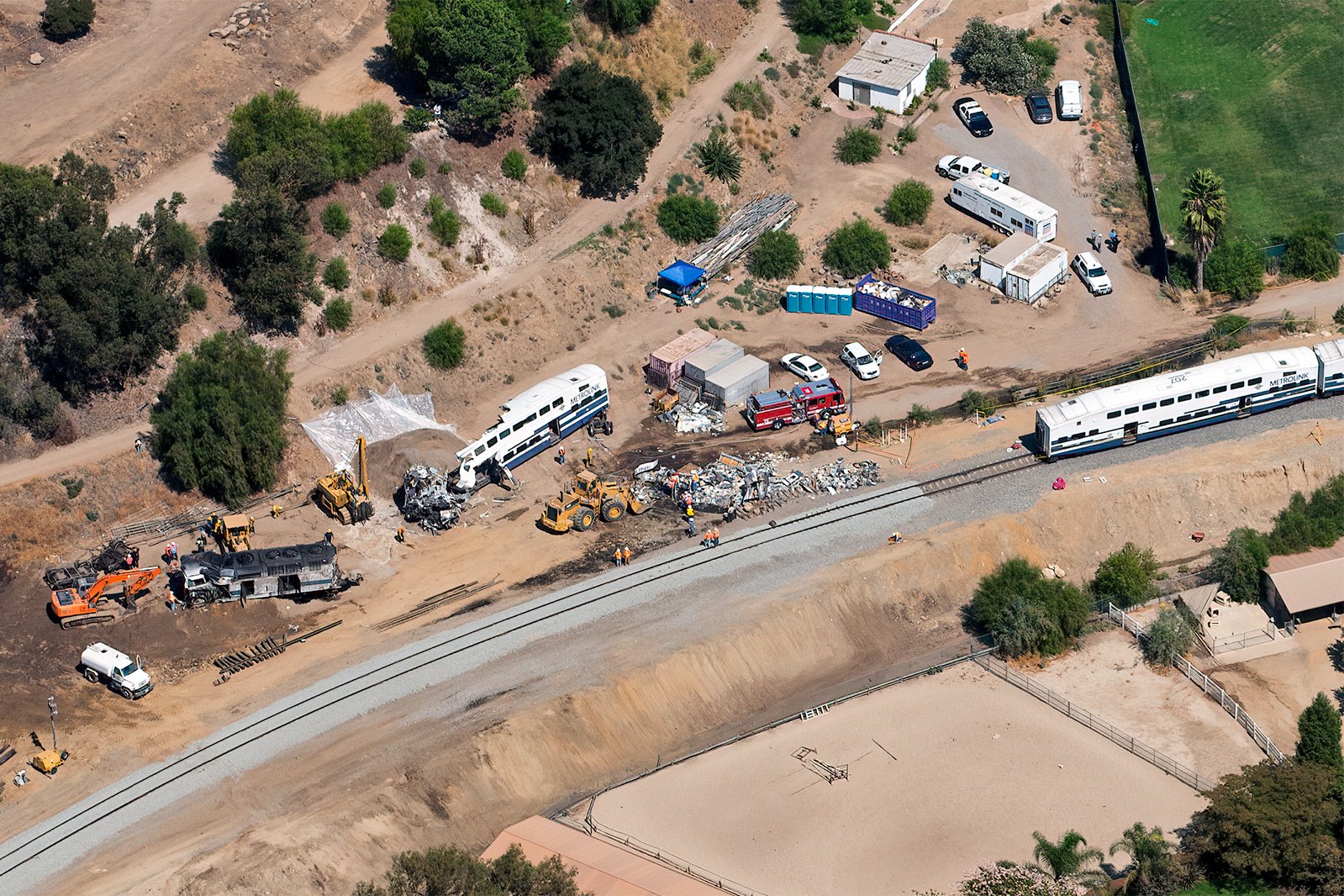
The 2008 Chatsworth Train Collision was a tragic rail accident that occurred on September 12, 2008, in Los Angeles, California. A Metrolink passenger train collided head-on with a Union Pacific freight train, resulting in 25 fatalities and 135 injuries. This incident marked one of the deadliest crashes in U.S. rail history and led to significant changes in rail safety protocols.
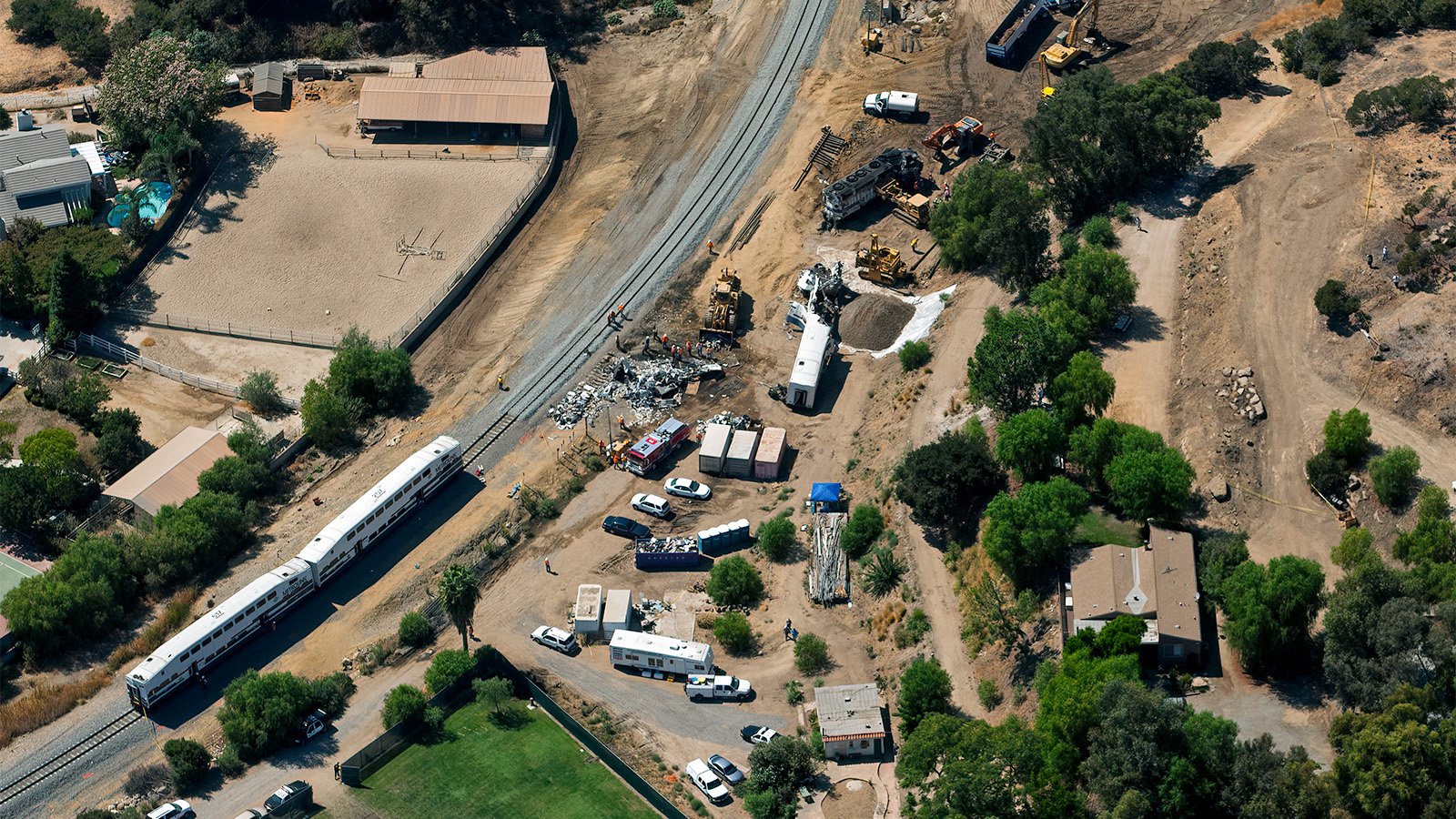
Aerial view of the 2008 Chatsworth train collision site focusing on the central area of the wreckage, with severely damaged and overturned train cars and emergency personnel nearby.
What Happened?
At precisely 4:22:23 PM PDT on September 12, 2008, a Metrolink passenger train collided head-on with a Union Pacific freight train on a single-track section of the Ventura County Line in Los Angeles, California. The impact was catastrophic. The Metrolink train’s first passenger car was almost obliterated while the freight train derailed under the immense force of the crash. The aftermath was a scene of chaos and destruction, with passenger cars twisted and overturned.
What Caused the Crash?
An investigation into the 2008 Chatsworth Train crash revealed a disturbing truth: the Metrolink engineer had been exchanging text messages with a friend, sending multiple messages shortly before the crash, with the last one sent just 22 seconds prior, ultimately leading to the engineer running a red signal. The National Transportation Safety Board (NTSB) concluded that the engineer’s failure to stop at the red signal was the immediate cause that directly led to the Metrolink train’s fatal collision with the Union Pacific freight train.
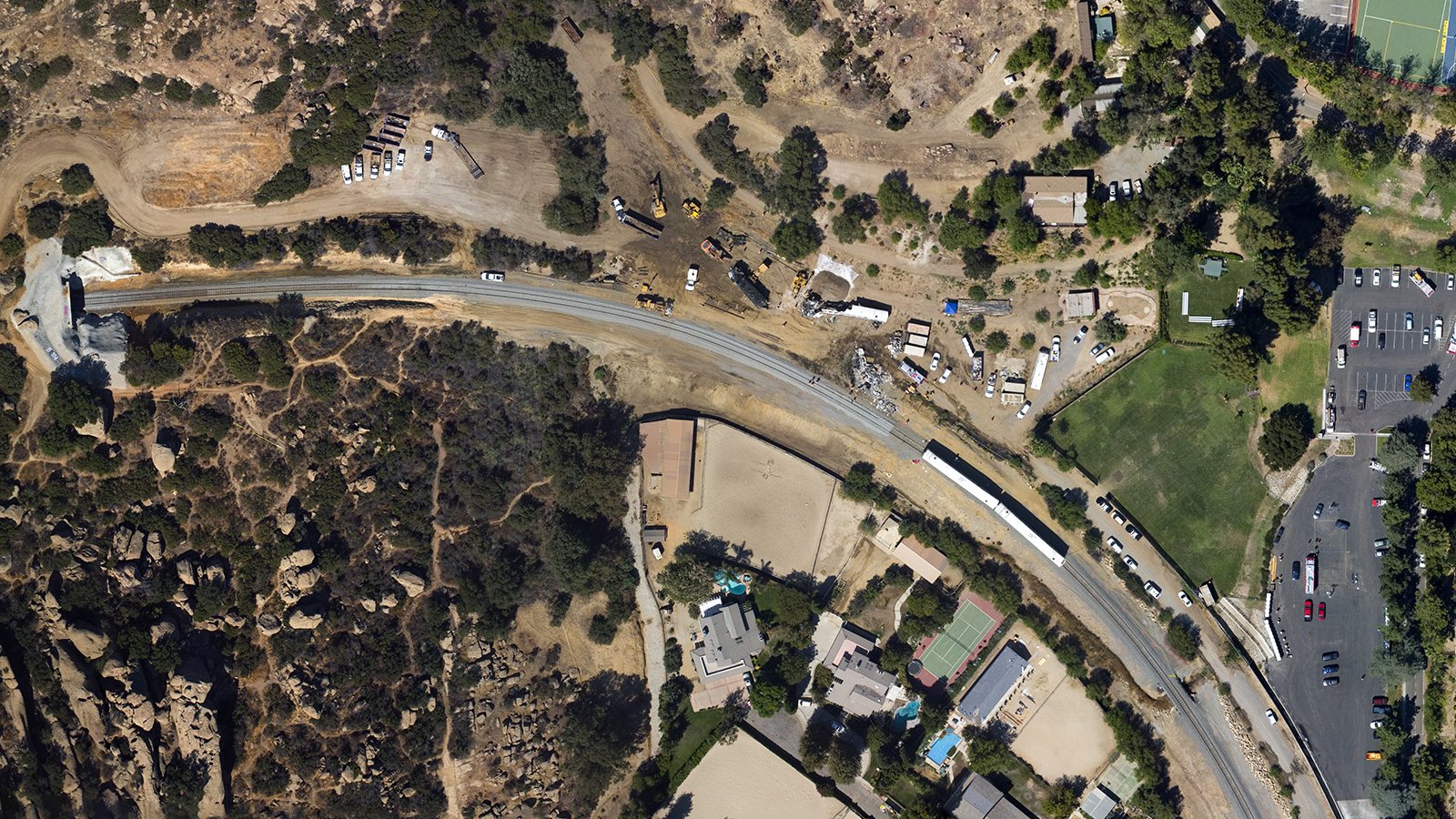
Vertical view of the 2008 Chatsworth train collision site, showing mangled train cars alongside emergency vehicles and nearby residential areas.
Emergency Response and Rescue Efforts
The emergency response to the Metrolink train collision was both swift and extensive. Within minutes of the crash, hundreds of first responders, including firefighters, police officers, and medical personnel, converged on the scene. The Los Angeles Fire Department (LAFD) categorized the incident as a mass casualty event, mobilizing all six of their air ambulances and additional helicopters from nearby departments to assist in the rescue efforts.
Approximately 250 firefighters and numerous other emergency workers worked tirelessly to rescue passengers trapped in the wreckage. The scene was chaotic, with smoke and hazardous materials complicating rescue efforts and the collision site being particularly difficult to access, with debris and wreckage scattered across a wide area. Despite these obstacles, the emergency workers persevered, using specialized equipment to cut through the metal and reach injured passengers.
In addition to the immediate rescue efforts, the emergency response also involved the activation of emergency brakes and other safety measures to prevent further damage, stabilizing the chaotic situation and preventing additional casualties. The incident highlighted the importance of having robust emergency response plans in place to deal with mass casualty events and the lessons learned from the Chatsworth crash have since been used to enhance emergency preparedness and response protocols nationwide.
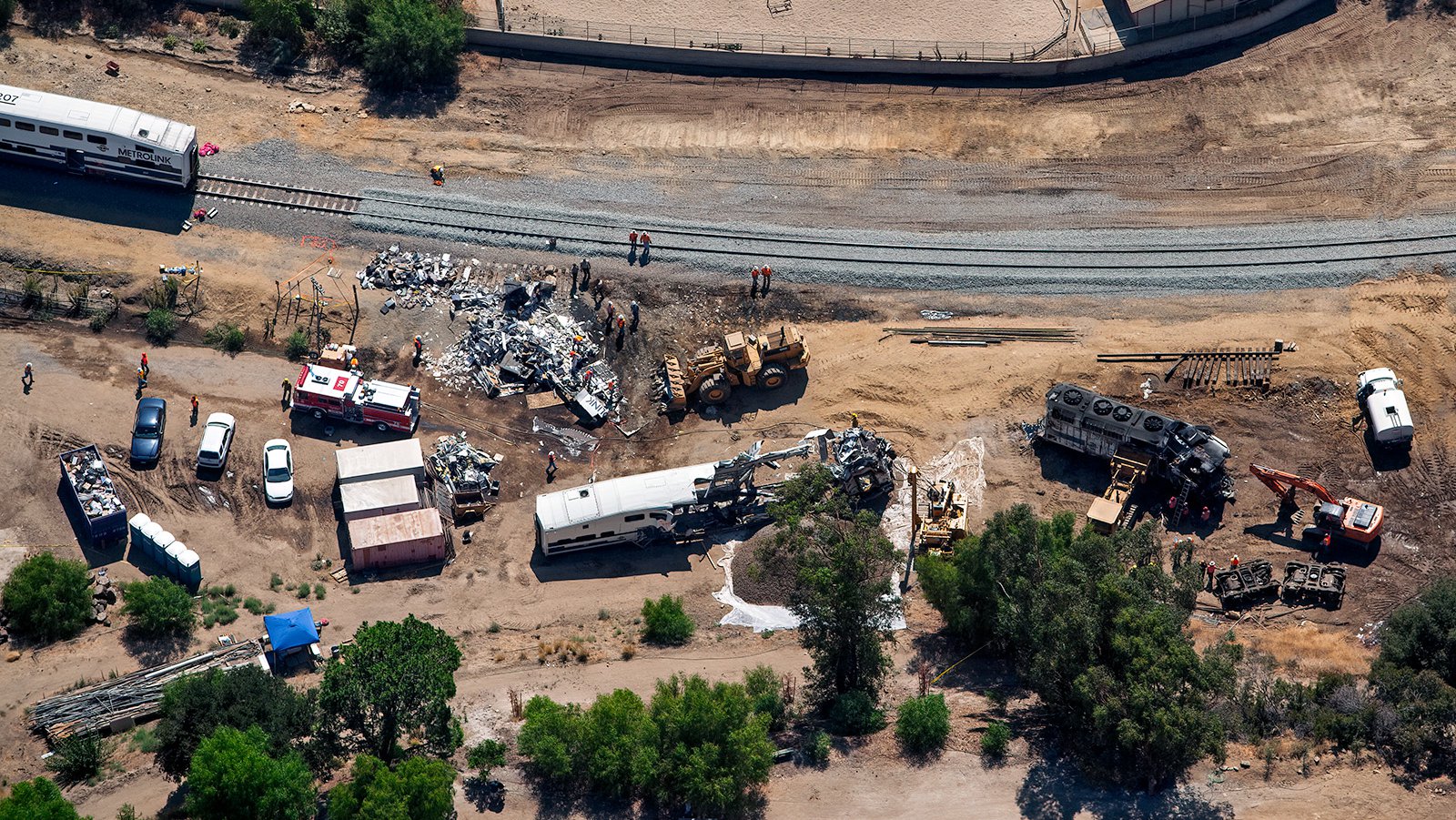
A close-up view of mangled Metrolink train cars and emergency crews actively working at the scene, clearing debris from the crash and fixing the damaged tracks.
Legal and Regulatory Changes
In the wake of the Chatsworth train crash, Congress passed the Rail Safety Improvement Act of 2008, marking the first major update to the Federal Railroad Administration’s safety regulations since 1994. This landmark legislation aimed to address the safety deficiencies exposed by the collision and enhance the overall safety of the rail industry by mandating the implementation of Positive Train Control (PTC) technology, an advanced safety system to prevent collisions caused by human error.
The Rail Safety Improvement Act also introduced new safety regulations to address the factors that contribute to human error, ensuring that rail workers are adequately rested and alert while on duty, and focused on enhancing safety at highway-rail grade crossings, a critical area of concern for rail safety.
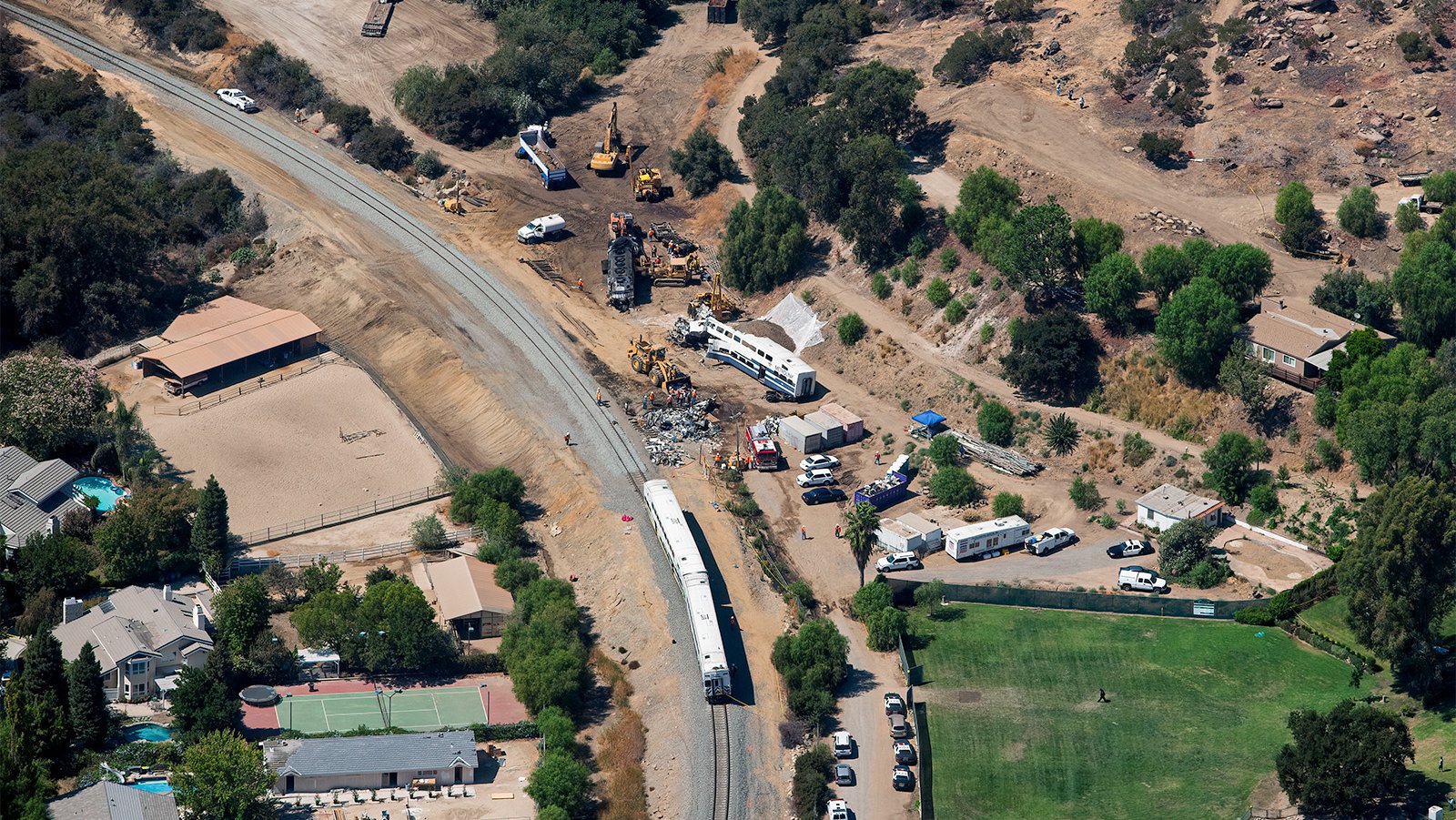
Emergency crews on site clearing debris from the Chatsworth crash, next to freshly repaired rail lines and overturned and mangled Metrolink train cars.
Positive Train Control (PTC) Implementation
The Chatsworth train crash acted as a powerful catalyst for the implementation of Positive Train Control (PTC), an advanced train protection system that utilizes GPS, radio towers, and onboard computers to monitor train locations and movements. PTC eliminates the risk of human error by automatically stopping trains that run red signals, addressing a key factor in the Chatsworth collision. This technology ensures that trains operate within safe parameters, significantly reducing the likelihood of collisions and derailments, and has been a game-changer for rail safety, providing an additional layer of protection for passengers and train crews.
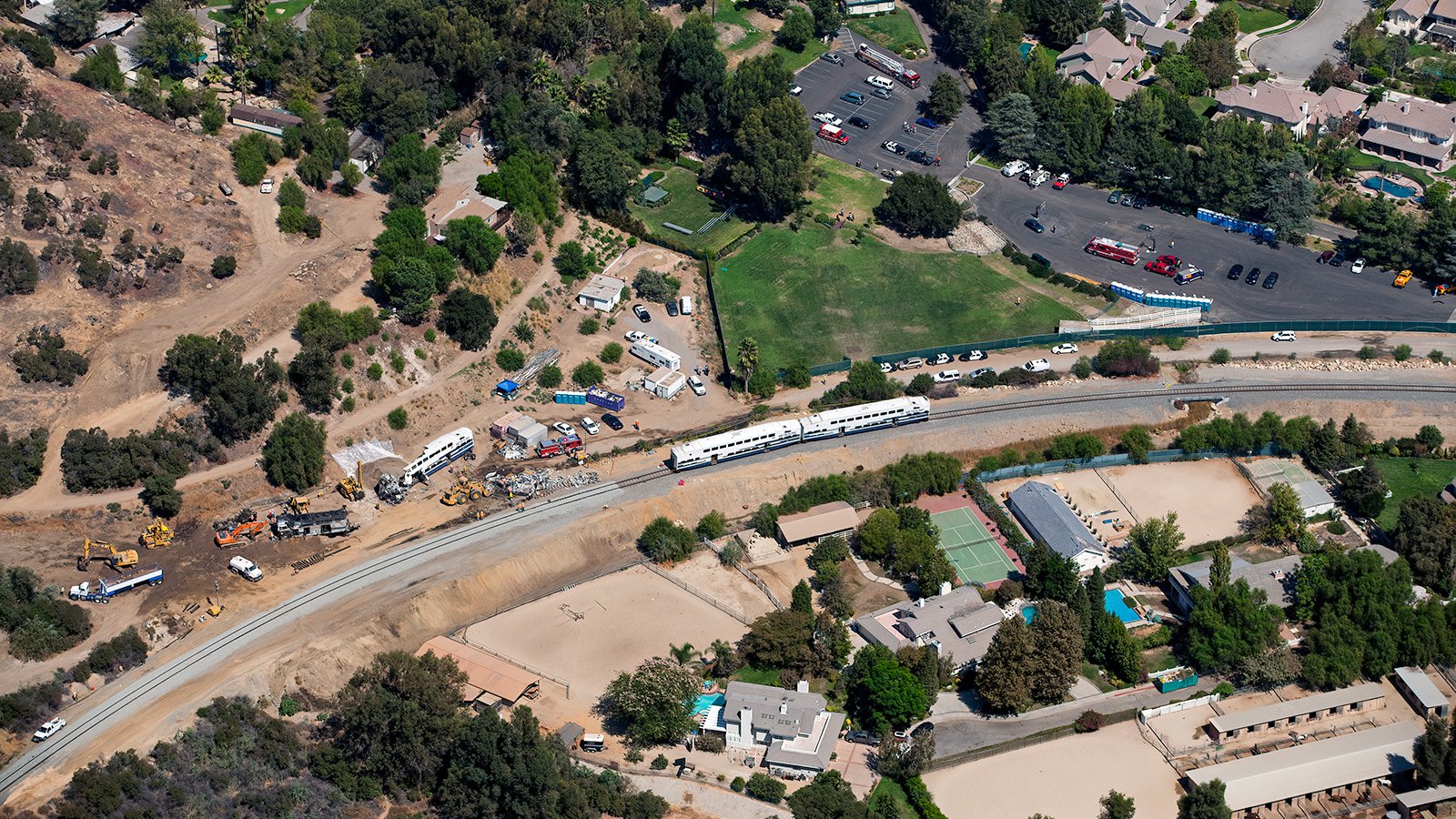
A Metrolink train sits on the tracks on the Ventura County Line, with mangled and overturned train cars just off to the side. In the wake of the Chatsworth crash, Metrolink commuter rail services became the first commuter railroad in the United States to fully implement Positive Train Control technology.
Memorials and Remembrance
In the aftermath of the crash, efforts were made to honor the memories of those who lost their lives and provide a place for reflection and remembrance. Shortly after the collision, a temporary memorial with flowers and notes was created at the Simi Valley station. This spontaneous outpouring of grief and support from the community highlighted the profound impact of the collision on those directly affected and the broader community. On September 12, 2009, one year after, the Metrolink Memorial Plaza was established at the Simi Valley train station, where annual memorial ceremonies continue to remind of the lives lost and the enduring impact of the Chatsworth train crash on the community.
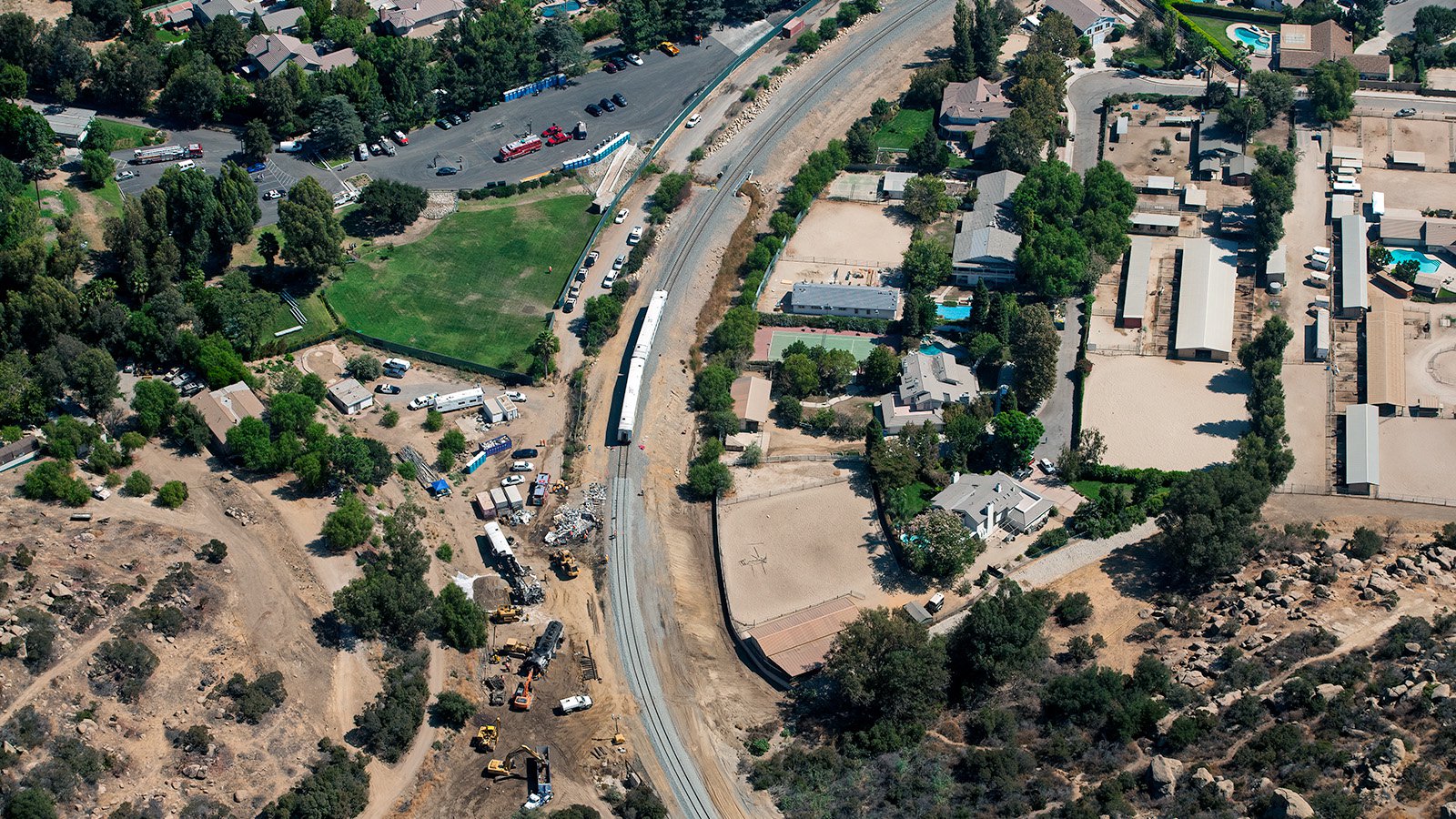
A wide oblique aerial view of the Chatsworth crash site provides a broader context of the accident area, showing the wreckage, support operations, and the proximity of the crash site to the nearby residential community.
The Chatsworth train crash was a watershed moment in rail safety. The collision, which tragically claimed 25 lives and injured 135 others, underscored the devastating consequences of human error and the critical need for advanced safety systems in the rail industry. The heroic efforts of emergency responders, who faced immense challenges to rescue injured passengers, demonstrated the importance of efficient and effective emergency response protocols. By honoring the memories of the victims and committing to ongoing safety advancements, we can work towards preventing future tragedies and ensuring the safety of all who travel by rail.